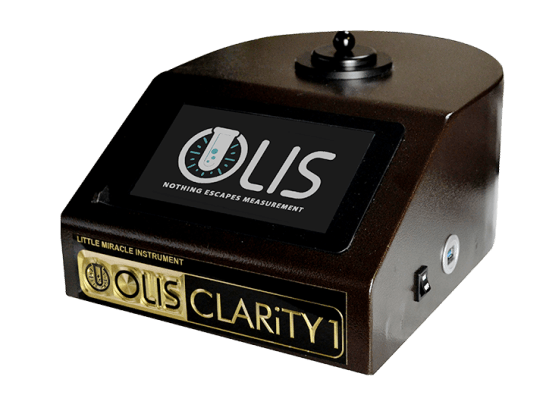The Basic Principles Of Circularly Polarized Luminescence
Table of ContentsExamine This Report about Uv/visSome Ideas on Uv/vis You Need To KnowLittle Known Facts About Circularly Polarized Luminescence.The Definitive Guide to Circular DichroismThe 30-Second Trick For Uv/vis

Spectrophotometry is a tool that hinges on the quantitative analysis of particles depending on how much light is soaked up by colored substances.
Not known Details About Uv/vis
A spectrophotometer is typically utilized for the measurement of transmittance or reflectance of options, transparent or nontransparent solids, such as polished glass, or gases. Although many biochemicals are colored, as in, they take in visible light and therefore can be determined by colorimetric procedures, even colorless biochemicals can frequently be converted to colored compounds ideal for chromogenic color-forming responses to yield substances suitable for colorimetric analysis.: 65 However, they can also be developed to measure the diffusivity on any of the listed light varieties that typically cover around 2002500 nm utilizing various controls and calibrations.
An example of an experiment in which spectrophotometry is utilized is the determination of the stability constant of a solution. A certain chain reaction within an option may take place in a forward and reverse instructions, where reactants form products and products break down into reactants. At some time, this chemical response will reach a point of balance called a stability point.
The Best Strategy To Use For Circularly Polarized Luminescence
The quantity of light that goes through the option is a sign of the concentration of certain chemicals that do not permit light to travel through. The absorption of light is due to the interaction of light with the electronic and vibrational modes of particles. Each kind of molecule has a specific set of energy levels associated with the makeup of its chemical bonds and nuclei and thus will soak up light of particular wavelengths, or energies, resulting in special spectral properties.
They are commonly utilized in many industries including semiconductors, laser and optical production, printing and forensic evaluation, as well as in labs for the study of chemical substances. Spectrophotometry is often utilized in measurements of enzyme activities, determinations of article protein concentrations, decisions of enzymatic kinetic constants, and measurements of ligand binding reactions.: 65 Ultimately, a spectrophotometer is able to determine, depending on the control or calibration, what compounds are present in a target and precisely how much through calculations of observed wavelengths.
Developed by Arnold O. Beckman in 1940 [], the spectrophotometer was produced with the help of his colleagues at his company National Technical Laboratories established in 1935 which would become Beckman Instrument Business and ultimately Beckman Coulter. This would come as an option to the formerly created spectrophotometers which were unable to absorb the ultraviolet correctly.
7 Simple Techniques For Uv/vis/nir
It would be discovered that this did not give acceptable outcomes, therefore in Design B, there was a shift from a glass to a quartz prism which permitted much better absorbance results - circularly polarized luminescence (https://www.cybo.com/US-biz/on-line-instrument-systems-olis-inc). From there, Design C was born with a change to the wavelength resolution which wound up having 3 systems of it produced
It was produced from 1941 to 1976 where the rate for it in 1941 was US$723 (far-UV devices were an alternative at extra cost). In the words of Nobel chemistry laureate Bruce Merrifield, it was "probably the most important instrument ever developed towards the improvement of bioscience." Once it ended up being stopped in 1976, Hewlett-Packard developed the very first commercially offered diode-array spectrophotometer in 1979 referred to as the HP 8450A. It irradiates the sample with polychromatic light which the sample takes in depending upon its homes. It is transferred back by grating the photodiode range which finds the wavelength region of the spectrum. Ever since, the creation and execution of spectrophotometry gadgets has increased immensely and has actually turned into one of the most ingenious instruments of our time.

Rumored Buzz on Circular Dichroism
The grating can either be movable or fixed.
In such systems, the grating is fixed and the intensity of each wavelength of light is determined by a various detector in the array. When making transmission measurements, the spectrophotometer quantitatively compares the portion of light that passes through a reference option and a test option, then digitally compares the intensities of the 2 signals and calculates the percentage of transmission of the sample compared to the reference standard.
